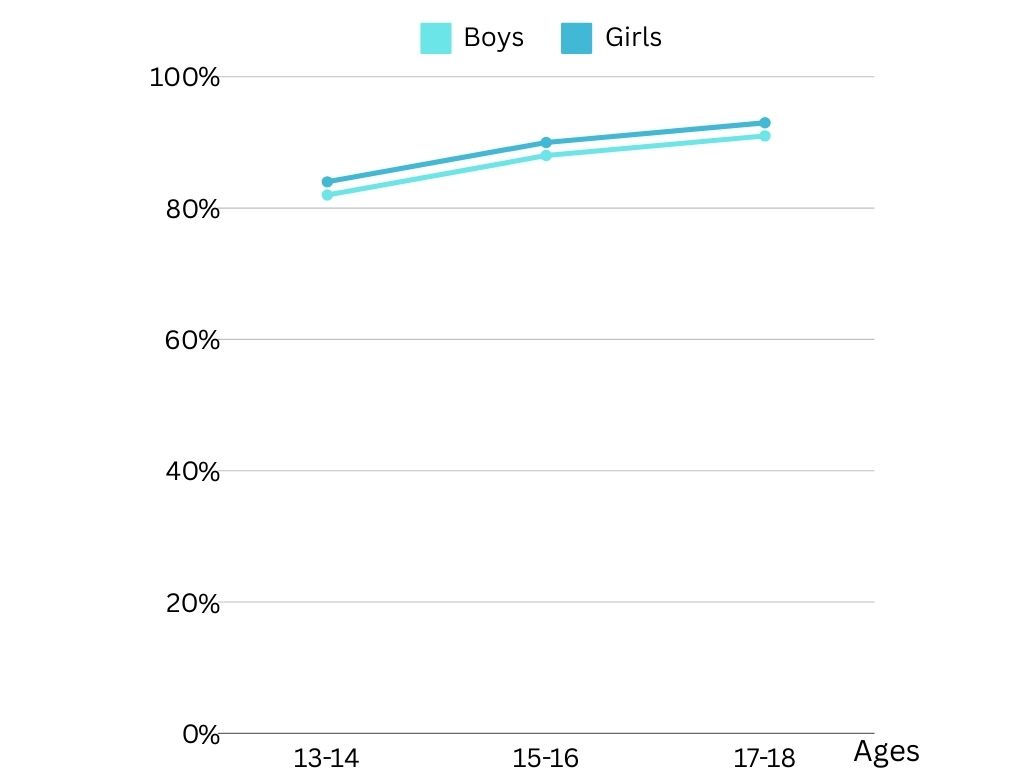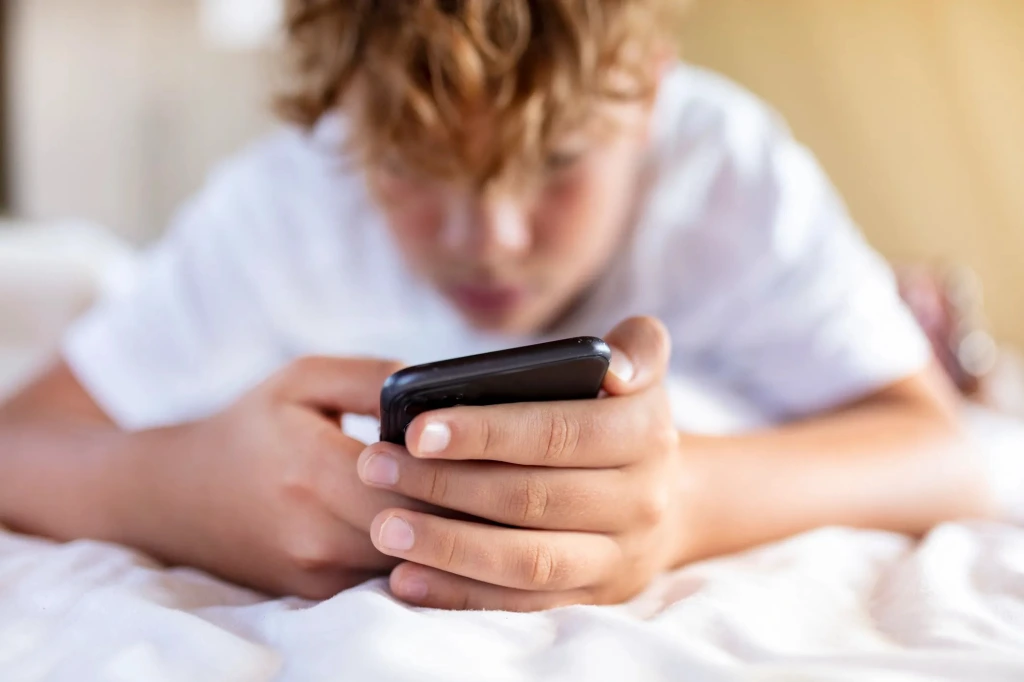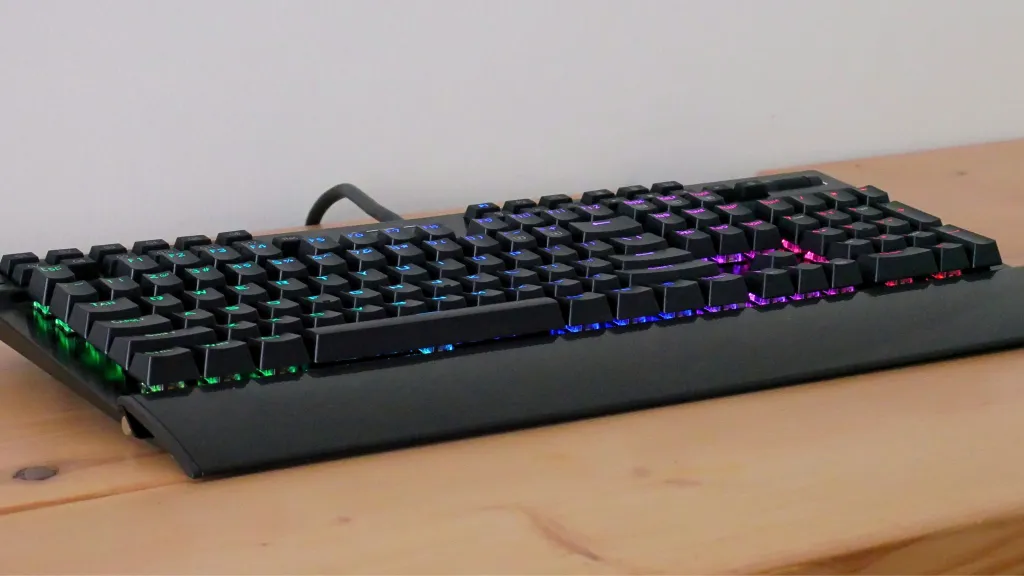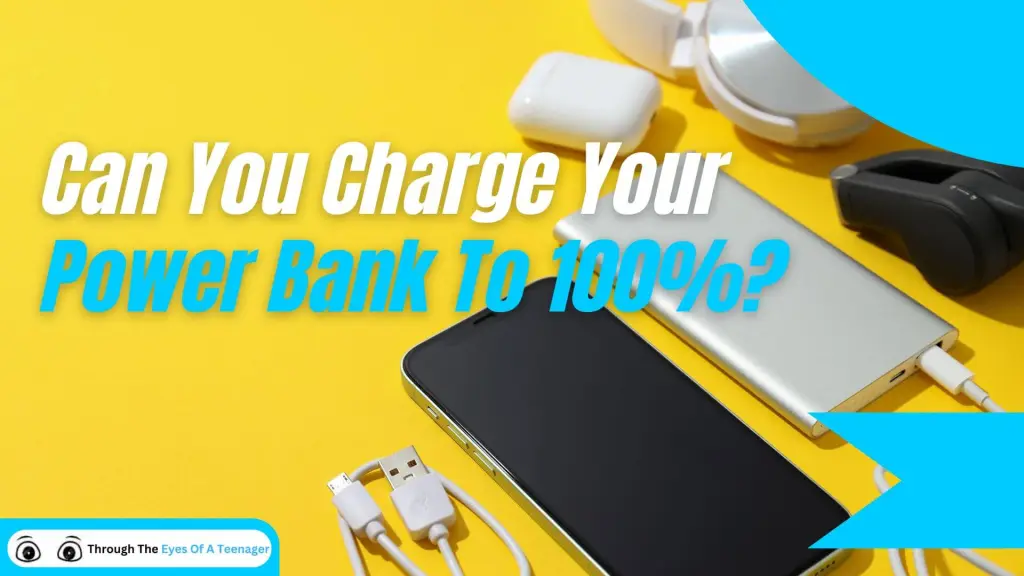(Image credit: iNews)
In 2024, teen smartphone ownership has hit new heights, and the numbers are pretty mind-blowing. The average teen spends a massive 7 hours and 22 minutes glued to their smartphone every single day! That’s nearly a third of their entire day, dedicated to scrolling through social media, chatting with friends, watching videos, or gaming.
Smartphones have gone from being just a cool gadget to a daily essential in the life of a teenager. Whether it’s taking photos, staying up to date with the latest trends, or catching up on the latest YouTube videos. These devices have become the ultimate all-in-one tool for entertainment and connection.
But how many teens actually own these pocket-sized powerhouses? Well, the numbers show that almost every teenager in the US now has one (though ownership rates may vary in other parts of the world).
It’s no longer just about having a phone to make calls; it’s about having a mini-computer in their pocket that does it all. With smartphones becoming more affordable and accessible, it’s no wonder teen ownership has skyrocketed. From school assignments to social networking, teens rely on their smartphones for almost everything. Which blurs the line between leisure and productivity.
Helpfull article:

Tablets vs Laptops for Students in 2024: Which is the Best Choice for Academic Success?
Discover the pros and cons of tablets vs laptops for students in 2024. Learn which device best suits your academic needs, budget… Read more
Best latest article:
Table of Contents:
- 01 The Current State of Teen Smartphone Ownership
- 02 Factors Influencing Teen Smartphone Adoption
- 03 Smartphone Usage Patterns Among Teenagers
- 04 Health and Social Implications of Teen Smartphone Ownership
- 05 Parental Control and Monitoring of Teen Smartphone Use
- 06 2024 Teen Smartphone Ownership: conclusion
- 07 sources
- 8 FAQ’s
The Current State of Teen Smartphone Ownership
In 2024, a staggering 95% of teenagers own a smartphone, which is like saying everyone in high school has one. It’s not even a luxury anymore – it’s a necessity for us teens.
With so many apps, games, and social platforms, it’s no surprise that phones are pretty much glued to our hands. Plus, smartphones have become more affordable and accessible, so it’s not just for those with bigger budgets. Whether you’re gaming, scrolling through TikTok, or catching up on school assignments, the smartphone will always be there.
Get all the latest post on through the eyes of a teenager straight in your inbox.
Subscribe to stay updated, it’s free!
When you compare that to previous years, the jump is pretty insane. As shown in the graph below, in 2015 only about 73% of teens had smartphones. Fast forward to today, and that number has skyrocketed by over 20%. Even from 2020, when 88% of teens owned a smartphone, there’s been a noticeable increase.
It shows just how much tech has become an essential part of us teens daily lives. The rise in ownership isn’t just about phones getting cooler but about how we’re using them for more things. from studying to staying connected during the pandemic and beyond.

(Image credit: Throughtheeyesofateenager.com)
What’s also cool is seeing how smartphone ownership breaks down by age. Among 13-14-year-olds, around 85% have a phone, but once you hit 15-17, that jumps up to 98%. It’s basically a must-have by the time you hit high school.
And when you look at the gender split, there’s a slight difference. 96% of teen girls own a phone compared to 93% of boys. It’s a small gap, but it reflects how digital communication and social media might play a bigger role for some girls, especially with the rise of platforms like Instagram and Snapchat. However, this is such a small difference that it doesn’t really mean much.

(Image credit: Throughtheeyesofateenager.com)
Factors Influencing Teen Smartphone Adoption
Parental decisions and family dynamics play a huge role in smartphone ownership among teenagers. In many families, getting a smartphone for your teen is almost like a rite of passage. According to recent studies, about 70% of parents say they feel comfortable giving their kids a smartphone by the age of 13. I personally got my first smartphone by the time I was around 12 years old (I’m 15 now), which was considered pretty late at the time. This comfort often stems from the desire to stay connected, especially as kids head out into the world more independently.
In a survey, nearly 60% of parents reported that they believe having a smartphone improves family communication. They say having a smartphone makes it easier to keep track of their teens and ensuring safety. Here’s a quick overview of how family dynamics influence smartphone decisions:
| Family Dynamic | Percentage of Parents Supporting Smartphone Ownership |
|---|---|
| Families with younger kids | 45% |
| Families with teens | 70% |
| Single-parent families | 55% |
(Image credit: Throughtheeyesofateenager.com)
Socioeconomic factors also play a crucial role in determining smartphone ownership among teens. In families with higher incomes, ownership rates can reach up to 98%, while in lower-income households, it drops to about 80%. This disparity highlights how access to technology can vary significantly based on financial resources.
Many families may prioritize smartphones for educational purposes, especially with the rise of online learning tools. However, it’s not just about owning a device; it’s also about having access to reliable internet and apps that support learning.

Peer pressure and social norms are huge when it comes to smartphones. A whopping 85% of teens report feeling pressure to have the latest device to fit in with their friends. Which I as a teenager myself can relate to. This social influence shapes not only what phones us teens want but also how we use them.
With remote learning becoming the norm, educational requirements have shifted significantly. Around 72% of teens say they rely on their smartphones for schoolwork and online classes. I personally don’t use my smartphone for schoolwork but I do often use it for checking my homework or tests for the coming week.
Having a smartphone isn’t just about social media; it’s also about staying on top of assignments and connecting with classmates for group projects. As we navigate this tech-filled world, it’s clear that smartphones are more than just gadgets. They’re essential tools for our everyday life.
Smartphone Usage Patterns Among Teenagers
The average daily screen time for teens is astonishingly high, sitting at around 7 hours and 22 minutes! This number includes everything from scrolling through social media to binge-watching shows and playing video games.
With so much time spent on screens, it’s clear that smartphones have become central to teenage life. Interestingly, a survey found that 60% of teens believe they spend too much time on their devices, yet they find it hard to cut back. This might be because smartphones are our main connection to friends and entertainment, making it very tricky to put them down.
When it comes to the most popular apps and activities, social media reigns supreme. Platforms like TikTok and Instagram dominate, with about 75% of us teens using them daily. Gaming follows closely, with popular titles like Roblox and PUBG captivating millions of teens daily life. Here’s a quick look at the top activities teens engage in on their smartphones:
| Activity | Percentage of Teens Engaging Daily |
|---|---|
| Social Media | 75% |
| Gaming | 65% |
| Streaming Videos | 70% |
| Messaging Apps | 80% |
(Image credit: Throughtheeyesofateenager.com)
Usage patterns can vary significantly between weekdays and weekends. On weekdays, screen time averages about 6 hours, mainly due to school-related tasks and socializing. However, on weekends, that number can jump to over 8 hours as teens have more free time to indulge in entertainment. This shift highlights how our schedules shape our screen habits. Which makes the weekends a prime time for binge-watching and gaming marathons.
While smartphones offer numerous benefits, their impact on academic performance can be a double-edged sword. About 60% of teachers report that smartphone distractions during class lead to lower grades for some students. On the other side, many students use their phones for educational resources. With 65% saying they rely on apps for studying and completing assignments. This means smartphones can be both a helpful tool and a source of distraction. Which further emphasizes the importance of balancing screen time with academic responsibilities.
Parental Control and Monitoring of Teen Smartphone Use
Parental control apps and features have become increasingly prevalent as parents seek to manage their teens’ smartphone use. Recent studies indicate that around 65% of parents use some form of monitoring or control app. These apps can restrict screen time, filter content, and track teens location. Which makes the parents feel more secure about their kids’ online activities. However, while these tools can be helpful, they often raise questions about privacy and trust. It’s important for families to discuss how these features work and why they are being used.

When it comes to the effectiveness of smartphone usage limits set by parents, the results can be pretty mixed. A survey found that 70% of teens reported that they often ignore or bypass these limits, citing that they find ways around restrictions. However, some teens do acknowledge that limits help them manage their time better. With about 40% saying they appreciate having boundaries, even if they push back against them. Here’s a table summarizing the effectiveness of these limits:
| Response to Limits | Percentage of Teens |
|---|---|
| Often ignore or bypass limits | 60% |
| Appreciate having boundaries | 40% |
(Image credit: Throughtheeyesofateenager.com)
Communication between parents and teens about responsible smartphone use is crucial for fostering a healthy relationship with technology. Interestingly, only 40% of parents regularly discuss digital habits with their teens. This lack of dialogue can lead to misunderstandings and conflicts regarding smartphone use. Here’s a quick list of key challenges parents face in monitoring their teens’ smartphone activity:
- Privacy concerns: Many teens feel that monitoring invades their privacy.
- Technological know-how: Some parents struggle to keep up with the latest apps and trends.
- Resistance from teens: Teens may push back against limits or monitoring, viewing it as control.
- Balancing trust and oversight: Parents want to ensure safety without damaging their relationship with their teens.
By addressing these issues openly, parents and teens can create a more balanced and understanding approach to smartphone use.
2024 Teen Smartphone Ownership: conclusion
In conclusion, the landscape of teen smartphone ownership is more prevalent than ever. With staggering statistics revealing that 95% of 15- to 16-year-olds (in the US) now own smartphones. This tech surge comes with its own set of challenges, from the excessive daily screen time averaging over seven hours. To concerns about mental health, physical well-being, and social interactions.
Yet, it’s not all negative; open communication between parents and teens, along with effective monitoring strategies, can help mitigate these issues. As we navigate this digital age, fostering responsible smartphone use is essential. So, the next time you spot a teenager immersed in their device, remember just how integral smartphones have become to their daily lives—and maybe take a moment to reflect on your own screen time, too! Also be sure to check the sources linked below for the most relevant information.
Sources:
https://www.nielsen.com/insights/2012/young-adults-and-teens-lead-growth-among-smartphone-owners/
FAQ’s
There are several effective parental control apps that help manage teen smartphone usage. Popular options include Norton Family, which offers web filtering, time management, and location tracking. Qustodio provides detailed activity reports and the ability to block inappropriate content. Bark focuses on monitoring social media interactions and alerting parents to potential issues like cyberbullying or self-harm. Each app has its strengths, so parents should choose one that aligns with their specific needs and their teen’s tech habits.
To communicate effectively, create an open environment where teens feel comfortable sharing. Start conversations by expressing concerns without judgment, and ask about their feelings regarding smartphone use. Collaboratively set limits and establish regular check-ins to reinforce trust and encourage open dialogue about digital habits.
Smartphones offer educational benefits, providing access to learning resources and apps like Duolingo and Khan Academy. They also enhance communication, allowing teens to maintain friendships and support networks. Additionally, platforms like TikTok encourage creativity and self-expression, contributing positively to personal development when used responsibly.












Redragon YAMA K550 Review: Feature-Packed & Affordable
Looking for a premium full-size keyboard under $100? The Redragon YAMA K550 delivers RGB, macros, and serious value.
How Charging Your Power Bank to 100% Can Damage It
Learn why you shouldn’t charge your power bank to 100% and tips on extending your power banks lifespan.
Power Bank Lifespan: How Many Charges Will You Get?
Learn how to make your power bank last 3-5 years with expert tips on usage, storage, and maintenance. Discover the secrets to longer battery life!
Portable Charger Technologies: A Complete Guide to Fast Charging in 2024
Discover the latest portable charger technologies, from USB-PD to GaN charging. Learn which fast-charging standard is best for your devices and how to choose the right power bank.
Can Portable Chargers Overheat? Understanding the Risks and Safety Measures in 2024
Discover the potential risks of portable charger overheating, learn why it happens, and get crucial safety tips to protect your devices and yourself in 2024.